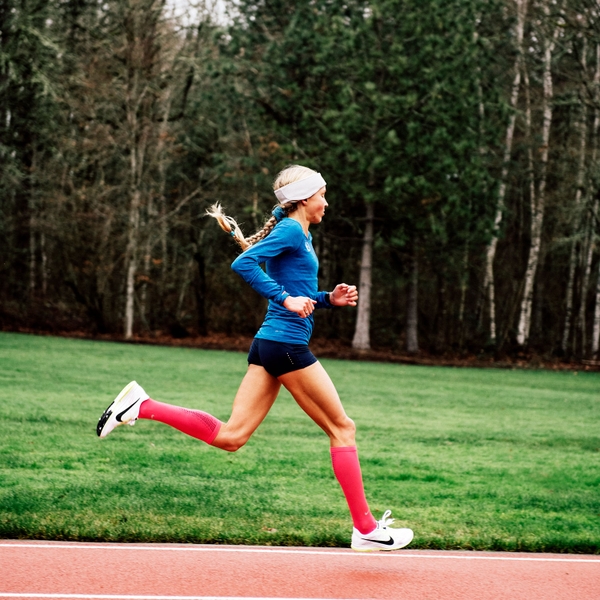Jordan Hasay Will Outrun You. While Smiling.
Until recently, the Nike track star seemed destined for burnout. But last year in Boston, after a wave of disappointing races and a personal tragedy, she ran a record-shattering debut marathon. Will the new distance of 26.2 miles save her career?
New perk: Easily find new routes and hidden gems, upcoming running events, and more near you. Your weekly Local Running Newsletter has everything you need to lace up! .
Jordan Hasay stood at the starting line of the Boston Marathon last April, feeling a sense of calm she didnât recognize. She was used to being jumpy and trying to quiet her mind, which starts racing long before her body does. In the past, she was so nervous that she brought coloring books to give her jittery fingers something to do. Once sheâs running, sheâs in her element. But waiting for the gun is the toughest part. That morning, though, she was steady and still.
Hasay had run hundreds of races, but never a marathon. And yet it felt like sheâd been training her whole life for this one. People have been calling her a phenom since she was 12, a young track star from Arroyo Grande, California, who won nearly every high school race she entered. After a commendable four years competing for the Ducks at the University of Oregon, she turned pro in 2013, joining running coach Alberto Salazarâs  and fulfilling a lifelong dream. But after a year and a half, the successes stopped. In September 2016, seven months before Boston, Hasay and Salazar had discussed parting ways if she wasnât able to pick up the pace. That November, her mother, Teresa, passed away suddenly at age 56, devastating Hasay and her close-knit family. At the starting line in Boston, Hasay had something to prove.
Download for your iPhone to listen to more longform titles.
During the race she kept up with the lead pack, fronted by elite marathoners Edna Kiplagat, Rose Chelimo, and Desiree Linden. If they had been running a 2:19 or 2:20 pace, Hasay would have fallen back, tucked in behind some man running 2:22, and gone it alone. Good job, Paula, good job, Paula, she told herself, recalling her momâs nickname for her, a nod to marathon world-record holder Paula Radcliffe, Hasayâs idol. It was unseasonably warm for Aprilâlater, about 20 runners would need to be submerged in ice baths. But not Hasay. The heat just took her home, to the California beaches and hills where she first ran six-mile loops with her mom, keeping a slight lead because she could.
Kiplagat pulled away right before the courseâs notorious , blowing through mile 20 in just five minutes and two seconds. She finished the race 59 seconds ahead of the next runner. Still, when Hasay hit the final Boylston Street stretch, she knew sheâd crushed itâshe was footsteps behind Chelimo, who crossed the finish line nine seconds before she did. Hasay took third place in the womenâs race and, at 2:23, clocked the fastest marathon debut time by an American woman. Her dad was crying. Her coach was crying. She clasped her hands together and bent down, thanking God.
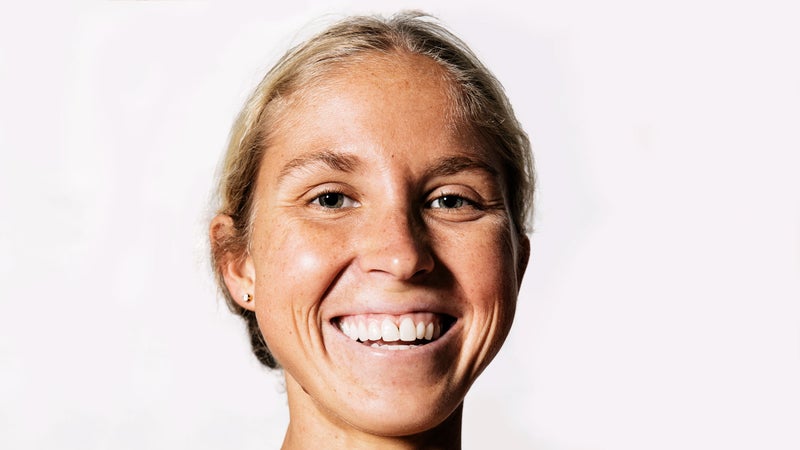
When local CBS reporter Steve Burton snagged her for a finish-line interview, she responded to his questions with characteristic exuberance, superlatives spilling from her mouth. But when he asked her how the crowd helped, in a city whose marathon will forever be marked by grief, she faltered, her face crumpling like a piece of paper. âI know that a lot of people out there lost loved ones here, and that really just lifted me up. I was thinking about all of them,â she said. âI know theyâre with us all in spirit, and I know that my mom would be really proud.â
She started to cry, and Burton wrapped his arms around her. âI love her so much, and sheâll always be with me,â she said, an amalgam of tears and smiles and achievement and longing spelled out on her face. It was an outpouring of emotion that made her the star of the race. And somewhere in it was the knowledge that she might have just saved her career.
Hasay stands out so brightly it seems like she might be plugged in, eyes and whispers following the tiny, deeply tanned running machine in a vivid royal blue hoodie. âItâs been a hard year,â she says. âBut Iâm very thankful!â
âDo you mind if I eat?â Hasay asks politely, as she unearths a PB&J sandwich and a ziplock bag of green grapes from the depths of her backpack. Weâre sitting next to a lake outside the cafeteria at Nikeâs headquarters near Portland, Oregon, and itâs hard to tell if the late September warmth is coming from the sun or Hasay herself. The 26-year-old is childlike, with the small frame of many elite runnersâsheâs five foot five and weighs 104 poundsâand she uses spirited language. Sheâs excited! Honored! Thrilled! When we meet, she doesnât just hug me, she flings her arms around me. When she giggles, her face emits energy like a firework. Even here, among her tribe, she stands out so brightly that it seems like she might be plugged in, eyes and whispers following the tiny, deeply tanned running machine in a vivid royal blue hoodie, her long blond âJordan braidsâ swishing behind her. âItâs been a hard year,â she says. âBut Iâm very thankful!â
The Nike campus has a retro-futuristic lookâemployees sporting Nike swooshes sit on Nike-orange chairs eating food from Nike-orange cafeteria Tupperware as workers glide by on Nike-orange bicycles. The robotic feel befits an elite Oregon Project runnerâs life, which seems downright monastic. Hasay lives in a two-bedroom condo a quarter mile from where weâre sitting. She runs 100 miles a week, once in the morning on the track behind the Nike campus and once in the evening, often on her treadmill at home. She grills steak outside her condo to hit her 5,000-calories-per-day goal. For fun she watches Harry Potter or Frozen for the gazillionth time. She sleeps ten hours a night and naps an hour every afternoon. âWhen Iâm not running, Iâm trying to rest,â she says. The remainder of her time is spent in guided meditation, massage therapy, acupuncture, and physiotherapy, and on flights to races all over the world.
Hasayâs grand planâthe one she wrote in her running log as a teen, to run professionally for Nikeâstarted to take shape when she won the national Foot Locker Cross Country Championships as a high school freshman in 2005, the second freshman ever to win the 5K event. She won the race again as a senior. She set national Junior Olympics records in the 1,500 and 3,000 meters. Throughout high school, she was nearly unbeatable, a star on running blogs and in the local media. Girls have been asking their parents for Jordan braids ever since.
In 2008, after a record-setting run for a high schooler in the 1,500 meters at the Olympic Trials at the University of Oregonâs Hayward Fieldâ4:14.50, if youâre wonderingâshe made it to the final but didnât qualify. Hasay was sent off by the crowd in Eugene, a.k.a. Tracktown USA, with a thunderous cheer: âCome to Oregon! Come to Oregon!â She did, enrolling the next year to study business and joining the Oregon Ducks track team, competing in 1,500-, 3,000-, 5,000-, and 10,000-meter events over the next four years. Despite finishing college as an 18-time all-American and the most decorated runner in the universityâs history, Hasay didnât do a whole lot of winning at Oregon. Though she helped lead the Ducks to national titles, won two individual titles, and broke countless personal records, she was often narrowly beaten and faced criticism for letting stress get the better of her at the end of a race. She couldnât deliver a kickâa fatal flaw in a runner with no other discernible weakness. She tackled that vulnerability with extra training, extra hamstring stretches, extra grit.
âWeâve seen a lot of phenoms, a lot of high school kids who are really good when theyâre young, and by the end of college theyâre done,â says Maurica Powell, Hasayâs primary coach at Oregon. âEverything about running made Jordan happy. It wasnât just the satisfaction of winning. She loved putting one foot in front of the other.â
But Powell couldnât ignore that Hasay was starting to plateau at shorter distances. In her senior year, Powell moved her to longer events, and Hasay made her 10,000-meter debut at a meet at Stanford. âMost people, when they run their first 10,000, theyâre dead for weeks, theyâre trashed. The first thing she said when it was over was, âI canât wait to do it again,âââ Powell says. Later, Hasay would run one of the fastest 10Ks in NCAA history. âShe did whatever it took,â says her University of Oregon teammate Allie Woodward. âIf foam rolling and an ice bath every single day were going to get you the win, then she did that.â
In Hasayâs senior year, former marathoner Alberto Salazar came to Eugene on a mission. Both devout Catholics, they met after Salazar delivered the keynote speech at a Christian leadership conference. âDuring his speech, he said, âI drove all the way from Portland for this, and now I get to meet one of the best collegiate distance runners in the country,âââ recalls Hasay. She was stunned. Sheâd wanted to run with him for years.
âWeâve seen a lot of phenoms, a lot of high school kids who are really good when theyâre young, and by the end of college theyâre done,â says Maurica Powell, Hasayâs primary coach at Oregon. âEverything about running made Jordan happy. It wasnât just the satisfaction of winning. She loved putting one foot in front of the other.â
In June 2013, the day of her last race as a Duck, Nike signed Hasay. The morning after, she was on a plane to Park City, Utah, where Oregon Project athletes train at altitude using sauna suits and both antigravity and underwater treadmills. The week she arrived, she ran her longest distance ever, 18 miles, in sweltering heat before collapsing on the floor. âThis is the real deal,â she wrote in her journal.
Itâs a widely acknowledged occurrence in track that high school prodigies donât often have the longevity to turn pro. Maybe they lack the dedication, or after a while their bodies begin to break down. With a core made of steel, a wildly lucky injury-free stretch, and exceptionally long legs on a small frame, Hasay had always been differentâmore resilient than the other runners Powell had coached at Oregon.
But in 2015, a year and a half into her professional career, Hasay suffered her first real injury, a bout of plantar fasciitis that knocked her out for most of the season. At her first race back that December, she missed the 10,000-meter Olympic qualifying time by a large marginâ31 secondsâand placed eighth. Eight months later, she had two disappointing finishes at the 2016 Olympic Trials. She placed 13th in the 5,000 meters and ninth in the 10,000. Making the Olympic team was a childhood dream she had relentlessly pursued. Sheâd missed making the team in 2008 and 2012. Failing as a pro was almost too much. Hasay flew home to California for her summer break. She wasnât sure anymore how badly she wanted a running career.
On September 22, 2016, the day after Hasayâs 25th birthday, Salazar and Darren Treasure, the teamâs sports psychologist, sat her down for what she calls âa real heart-to-heart.â They told her that despite everyoneâs best efforts, she simply wasnât racing well enough. âThey said that if I didnât get my act together, Alberto couldnât coach me anymore,â Hasay recalls. âI was really sad about it, but Iâm realistic. I didnât want to just be struggling. It was mutual, but it was hard.â
Hasay left that meeting knowing she had one more shot, and it was 26.2 miles long. She had dreamed of being a marathoner, and she and Salazar had talked about the race being the final stretch of her career, a natural progression that many track athletes take.
Salazar and Hasay adjusted her training and race schedule, moving away from a tactical focus on finishing speed and adding a weekly 20-mile run and two weight-lifting sessions. That October she won her first race in two years, the USA Track and Field 10-Mile Championships in Saint Paul, Minnesota. When she won, she felt like she belonged. Online speculation lit up like a wildfire. Was it a freak success? Could she replicate it? Would this be the comeback?
The day weâre together at Nike, Hasay is all optimism and forward momentum when I ask her about her early pro years. Sheâs not sure why she stopped succeeding. She prefers to focus on how well sheâs doing now. âI always thought that I would be better at the marathon,â she says with a shrug and a grin. But for the girl who hates to lose, itâs hard to believe itâs that simple. âSheâs very dedicated,â Salazar says. âEven if sheâs not feeling good, sheâs never going to seem down. You have to drag that out of her.â
Tomorrow morning sheâs leaving for Philadelphia, which means sheâll do her first run of the day at 5 a.m. âWhich isnât too bad!â she chirps. Sheâll be there to run a half marathon, and Meseret Defar, a 5,000-meter Olympic champion from Ethiopia, just joined the field. Hasay knows she canât beat Defar, and Salazar thinks she should focus on maintaining pace and not a win. âI donât know if heâs going to be upset if I try to win and run faster,â she says. âBut itâs hard to just let someone go, isnât it?â She smiles. (Defar took first place, Hasay third.)
American women are making huge gains in the marathon right now. Olympic runner Amy Cragg took bronze at the World Championships last summer in London. Shalane Flanagan, a 10,000-meter Olympic medalist, won the New York City Marathon in November, the first American woman to tear the tape in 40 years. Three other American women placed in the top ten that day, too. Still, Hasayâs time in Boston (2:23) was faster than Flanaganâs New York victory (2:26:53) by a stretch. And in October, in what was just the second marathon appearance of her career, Hasay posted the second-fastest time ever by an American womanâ2:20:57âto place third in Chicago.
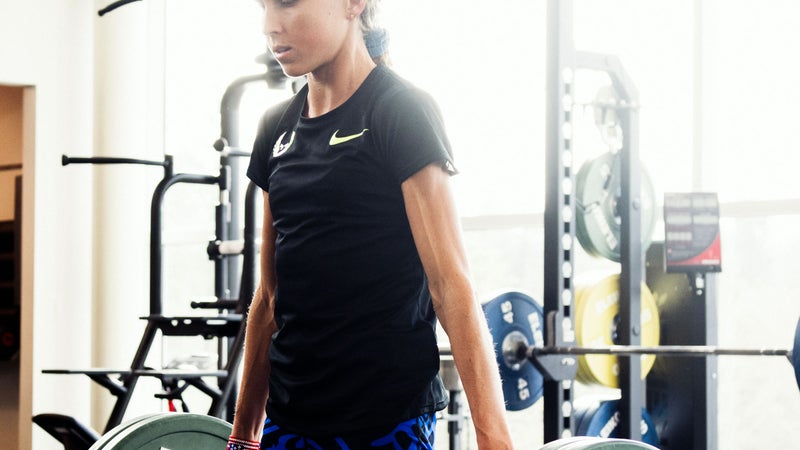
Some runners werenât sure what to think about Hasayâs Chicago performance. While itâs important to note that she has never been implicated, there have been a series of news reports and a long-standing investigation by the into the Oregon Project, examining allegations that Salazar pushed his athletes to take medications for conditions they didnât have and abused protocols that allow athletes to use certain banned substances if thereâs a viable medical rationale. After Chicago, where another Oregon Project runner, Galen Rupp, won the menâs race, Flanaganâwho is sponsored by Nike but runs for the Bowerman Track Clubâtold reporters, âThereâs still an investigation going on, so itâs hard to truly and genuinely get excited about the performances that Iâm watching. We donât get to choose our parents, but we certainly get to choose our friends and our coaches and who we want to include in our circle and put our faith and our trust in.â She added, âWho you choose to allow in says a lot about you.â (Flanagan declined to be interviewed for this story.)
Hasay isnât named in any news stories or in an interim USADA report, which was leaked online last year, but according to The New York Times and The Times of London, some of Salazarâs current and former protĂ©gĂ©sâlike Rupp, an Olympic medalistâare mentioned for allegedly and using prohibited infusion methods. (The USADA has never confirmed that the leaked report is authentic.) Salazar flatly denied the allegations in to The Oregonian. Two years before, he responded to published by the BBC and ProPublica in a detailed, two-part open letter published on the Oregon Project website. Rupp, who Salazar noted in his letter suffers from asthma and a thyroid condition, has also denied the allegations numerous times and has never tested positive for performance-enhancing drugs. Nor has Hasay, or any other Oregon Project runner. The USADA says it canât comment on investigations that are ongoing. A Nike representative confirmed that Salazar stands by his earlier statements.
Hasay says that sheâs not involved in the investigation and denies ever using performance-enhancing drugs. âEveryone asks about that now,â she says ruefully. âIf you get to know Alberto, then you know heâs not like that.â
After Flanagan won in New York, Hasay Instagrammed a congratulatory photo of the two of them together. On April 16, fans will get the showdown theyâve been waiting for when both athletes line up for Boston. The two have never competed against each other in a marathon, and an American woman hasnât won the race since 1985.
Hasay seems to thrive on the uncompromising pursuit of a dream. This is a woman who excitedly texts a friend that she has to practice peeing her pants for the marathon, and who, faced with an afternoon that includes three minutes in a minus-250-degree cryotherapy chamber, is downright chipper: âIt only gets cold the last 15 seconds, really.â She doesnât just run; she endures. âShe can put herself in some pretty dark places,â Powell says. âShe can keep her mind really calm when her bodyâs in a world of pain.â
Competing seems to be in Hasayâs DNA. When her parents, Joe and Teresa, first met at a Goldâs Gym in Los Angeles, in 1987, he was a body builder and she was a competitive swimmer. The Hasays fostered a culture of devotion in their California homeâto each other, to God and the Catholic Church, to exercise. As a kid, Jordan would stand in the driveway with her boogie board, waiting for her parents to finish their morning workouts. She and her younger brother, Jedd, would set up race courses around their cul-de-sac for the neighborhood kids. Basketball games in the pool were so rough they drew blood.
âSheâs just incredibly determined to be the best,â says Joe, who owns an aerospace-services company. Jordan has always run on rocket fuel, the adults around her trying to rein her in. When she was in fourth grade, the school principal called a special meeting with her parents to ensure that sheâd be able to handle the emotional strain of joining the junior high track team. (She beat the other girls handily.) She began accompanying her mom on runs through the hills of Arroyo Grande every morning, a ritual that would provide an anchor after her mother died in November 2016. (The family is keeping the details of Teresaâs death private.)
Hasay was at the Pittsburgh airport on her way to a race when she got the call about her mom from Salazar. He said that Teresa had been found dead at their home in California. Salazar arranged for the race officials who picked up Hasay to take her to the nearest Catholic church so she could talk to a priest.
âI went through a period where I was like, This is really hard and everyone says it gets better over time, why am I going backward? I always want to be trying to bounce forward.â
After Hasay opened up about her mother at the Boston finish line, the volume of messages from fans reaching out to her became overwhelming. The high of taking third in the marathon had worn off, and she felt adrift. âI canât be that hero to people if Iâm not healed myself,â she says. âI felt like I was somewhat being a hypocrite.â She pulled back from social media and returned home to California. On nights when she struggled to sleep, she put on her shoes, ran the loop she once did with her mom, and watched the sun come up. Still, sheâs trying to avoid using training to cope. âI didnât want running to be the replacement or the therapy for what happened,â she says. âRunningâs not always going to be there.â
Instead she turned to God, hanging a rosary from her rearview mirror, just like the one that hung in her parentsâ car when she was young. She went to church every weekend. She and Salazar recited the Lordâs Prayer and the Hail Mary before Boston. The day of the half marathon in Philadelphia, she went to mass with her father and his friends. She reads more, too, and looks at online testimonials from others who have lost parents.
âHowâs it been going now?â she asks when I tell her that I lost my father six years ago. She adds, âI went through a period where I was like, This is really hard and everyone says it gets better over time, why am I going backward? I always want to be trying to bounce forward.â
The Nike track, a 90-second jog from Hasayâs condo, looks like it was airlifted into a FernGully forest. Hasay shows up for a training session in a white zip-up shirt that makes her skin appear incandescent in the early-morning light. She begins to stretch, her upper and lower body coming together as neatly as the covers of a book. Salazar emerges from the trees, and they begin an easy back-and-forth about a new heart-rate sleeve heâs hoping she can wear, electrolyte packets he wants her to try, and a rosary he brought her for luck.
Salazar counts down her intervals. Sheâs running sets of 600, 400, 300, and 200 meters, at 112, 71, 51, and 32 seconds, respectively. âA very easy workout for her,â Salazar says. âJust enough to turn the legs over.â
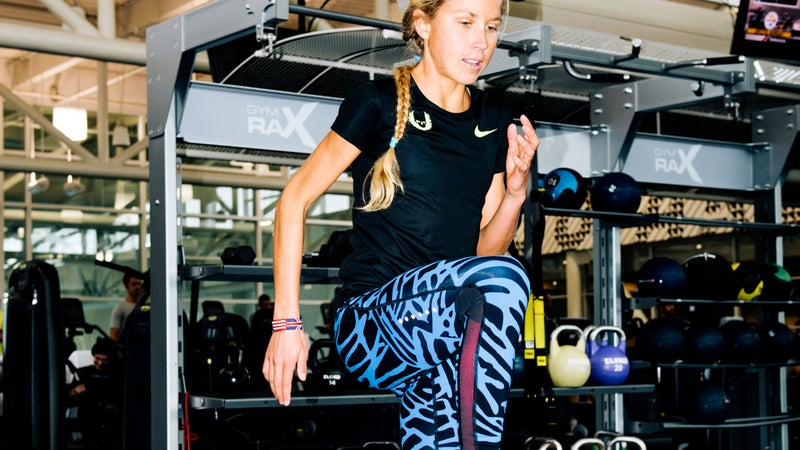
There arenât many more easy workouts in Hasayâs future. After the half marathon in Philadelphia, she ran Chicago in October, her last 26.2-miler before Boston. Long-term, sheâs aiming for a medal in the marathon at the 2020 Tokyo Olympics and is looking even further out. âL.A. is going to get the 2028 Olympics, and Iâll be 36,â she says. âI would love to run an Olympics in our home country. Thatâs the goal that keeps things in perspective when I get really nervous.â
âA little fast, slow down,â Salazar yells out. âWatch your shoulders.â Her face doesnât flicker; only her bottom lip jostles with the cadence of her feet. She doesnât sweat. Two girls shuffle along slowly in the outer lanes, Nike employees who have come to take advantage of the facility. Galen Rupp stops by for a sprint. âWith Jordan, Iâm convinced thereâs something about her metabolism, her stride, her body that makes the half marathon and marathon her sweet spots,â Salazar says before running out to adjust her shoulders and tighten up her arms.
Hasay doesnât yet know that in Chicago sheâll shave two minutes off her Boston time, making her one of the fastest runners in U.S. history. Today itâs just her and the sun and her coach and the track and the trees. To her right a squirrel keeps pace, and to her left an older man jogs on. For just a moment, theyâre lined up as though at a starting gate, and then Hasay surges forward, her final 200 meters, 30 seconds of bliss.
This is Katherine Laidlawâs () first story for șÚÁÏłÔčÏÍű.
Front of the Pack
The elite field at the Boston Marathon has never been more stacked. Here are the other top American women to watch on April 16.
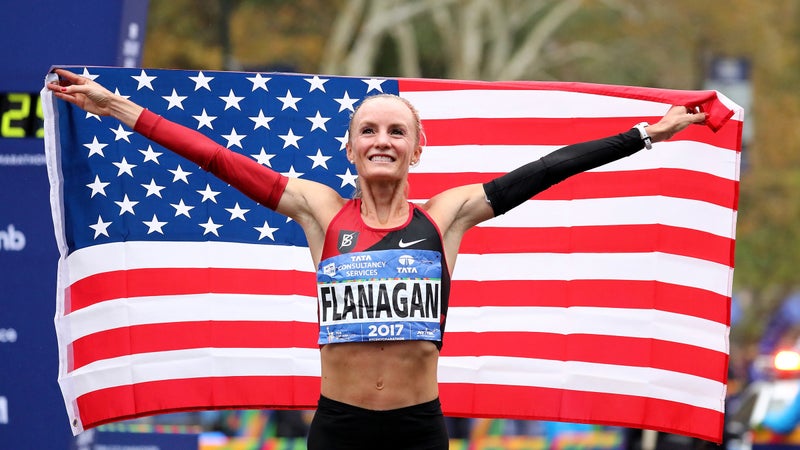
Shalane Flanagan
Flanagan is a local favoriteâsheâs from nearby Marbleheadâand each of the previous three times sheâs run the marathon, thereâs been chatter about whether she could win. Her time from 2014 (2:22:02) is the fastest ever run by an American woman on the courseâgood enough for seventh place. The closest sheâs come to winning was fourth place, in 2013. Last spring an injury forced her to pull out, but she found redemption in November, when she became the first American woman to win the New York City Marathon in 40 years. At 36, sheâs talked of retiring, so the pressureâs on to see if she can finally break the tape on her home course.
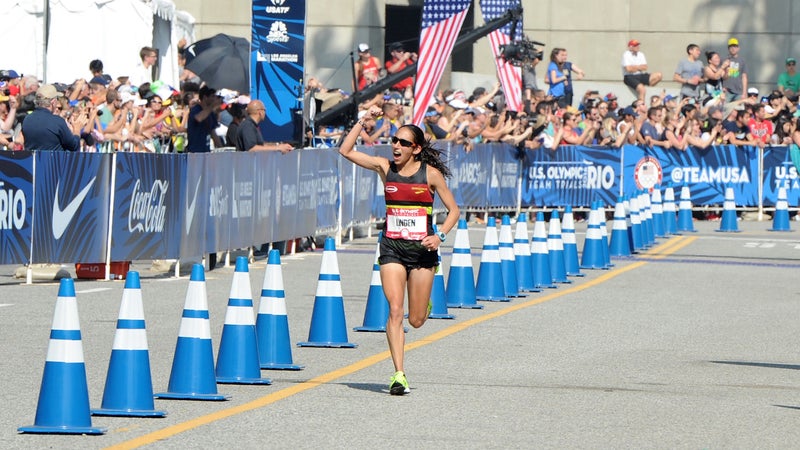
Desiree Linden
Linden consistently places among the top finishers at major races, but a big win still eludes her. At Boston in 2011, she finished second, just two seconds out of first. In 2015 and 2017, she finished fourth after publicly talking to the press about going for the win. (In 2017, her finish time was two minutes and six seconds slower than Hasayâs.) Linden, 34, and Flanagan also have plenty of experience racing togetherâincluding in the marathon at the Rio Olympics, where they finished seventh and sixth, respectively. This will be Lindenâs sixth time running Boston.
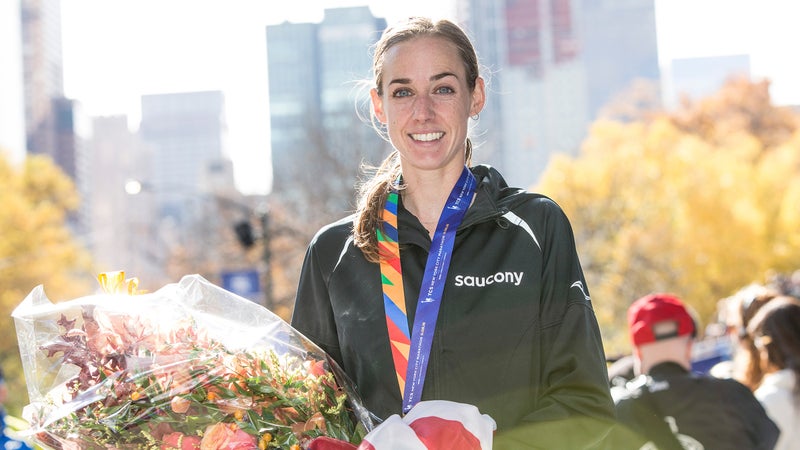
Molly Huddle
Huddle, 33, is the newbie of the field, but itâs a mistake to underestimate her. She has run only one marathonâNew York City, in 2016âand finished third, as the top American. While much less experienced at 26.2 miles than Flanagan and Linden, the two-time Olympian has 25 national titles, including the 10,000-meter American record, which belonged to Flanagan until Huddle broke it in Rio. At the Houston half marathon in January, she finished a full minute faster than Hasay, setting a new American record of 67:25.
